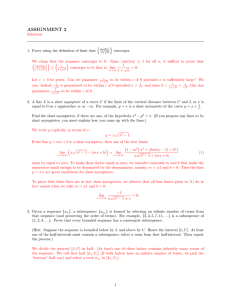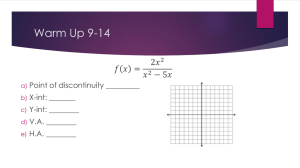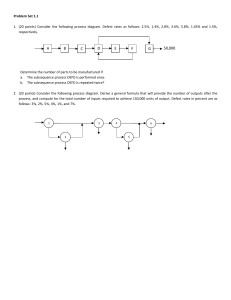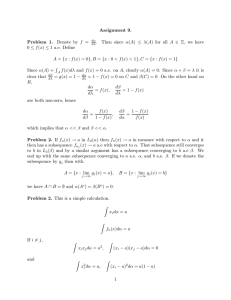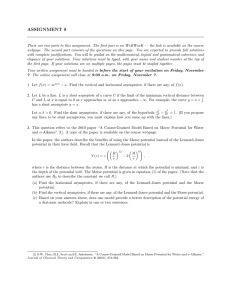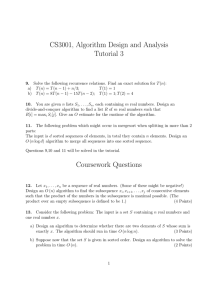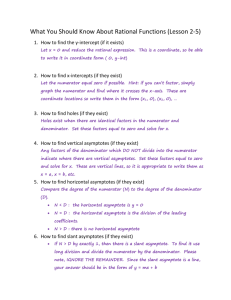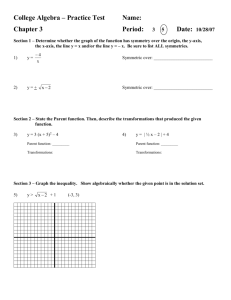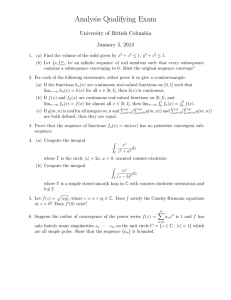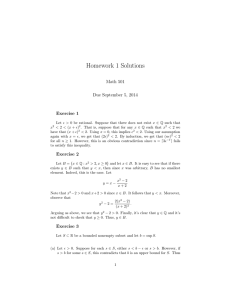ASSIGNMENT 2
advertisement
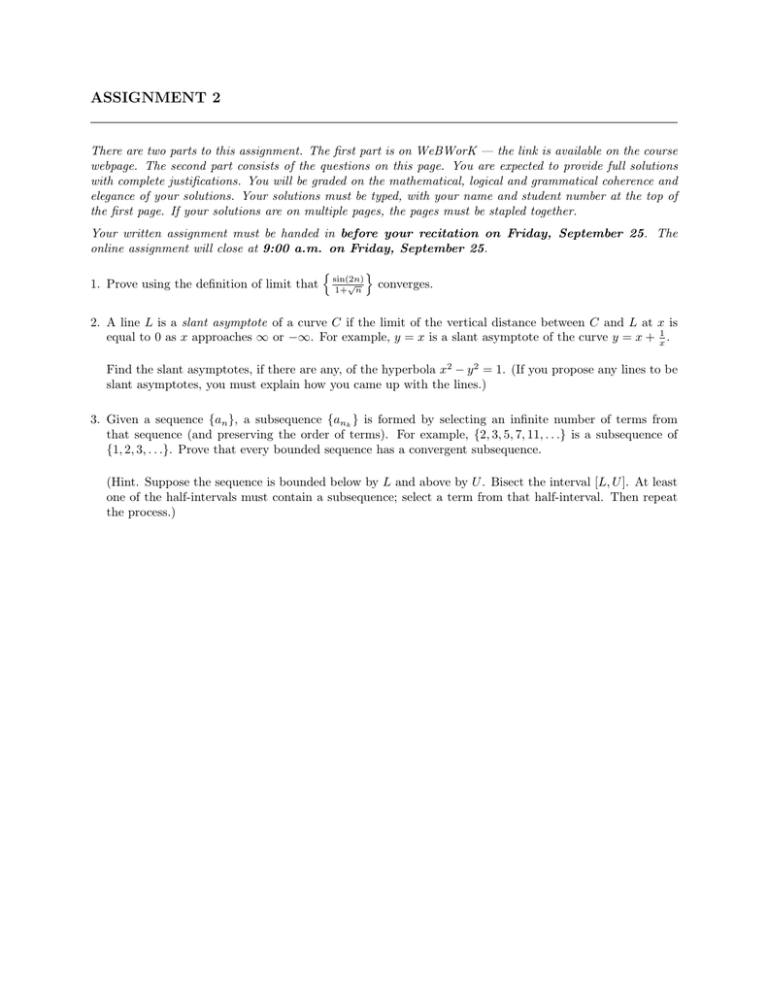
ASSIGNMENT 2
There are two parts to this assignment. The first part is on WeBWorK — the link is available on the course
webpage. The second part consists of the questions on this page. You are expected to provide full solutions
with complete justifications. You will be graded on the mathematical, logical and grammatical coherence and
elegance of your solutions. Your solutions must be typed, with your name and student number at the top of
the first page. If your solutions are on multiple pages, the pages must be stapled together.
Your written assignment must be handed in before your recitation on Friday, September 25. The
online assignment will close at 9:00 a.m. on Friday, September 25.
1. Prove using the definition of limit that
n
sin(2n)
√
1+ n
o
converges.
2. A line L is a slant asymptote of a curve C if the limit of the vertical distance between C and L at x is
equal to 0 as x approaches ∞ or −∞. For example, y = x is a slant asymptote of the curve y = x + x1 .
Find the slant asymptotes, if there are any, of the hyperbola x2 − y 2 = 1. (If you propose any lines to be
slant asymptotes, you must explain how you came up with the lines.)
3. Given a sequence {an }, a subsequence {ank } is formed by selecting an infinite number of terms from
that sequence (and preserving the order of terms). For example, {2, 3, 5, 7, 11, . . .} is a subsequence of
{1, 2, 3, . . .}. Prove that every bounded sequence has a convergent subsequence.
(Hint. Suppose the sequence is bounded below by L and above by U . Bisect the interval [L, U ]. At least
one of the half-intervals must contain a subsequence; select a term from that half-interval. Then repeat
the process.)
